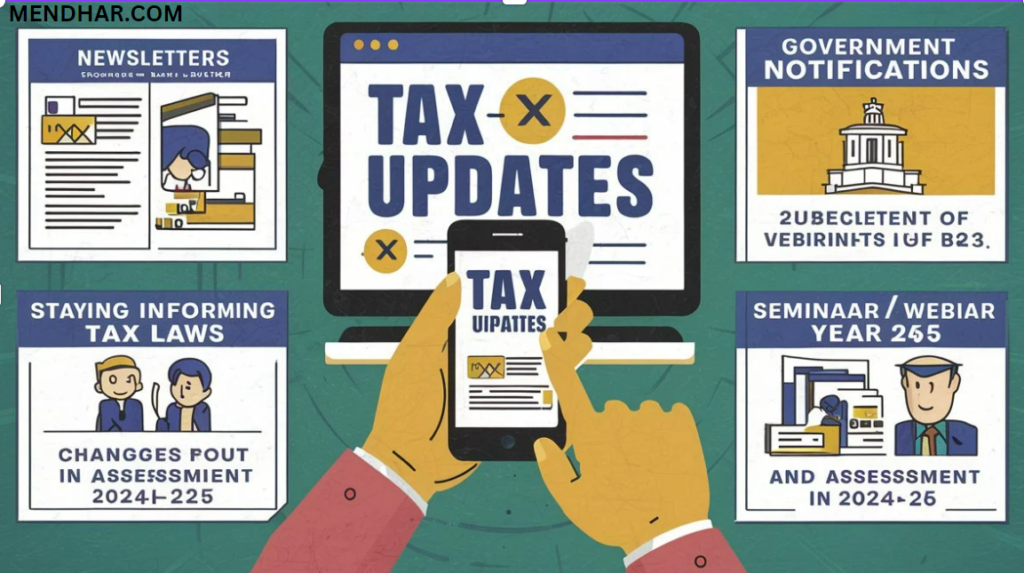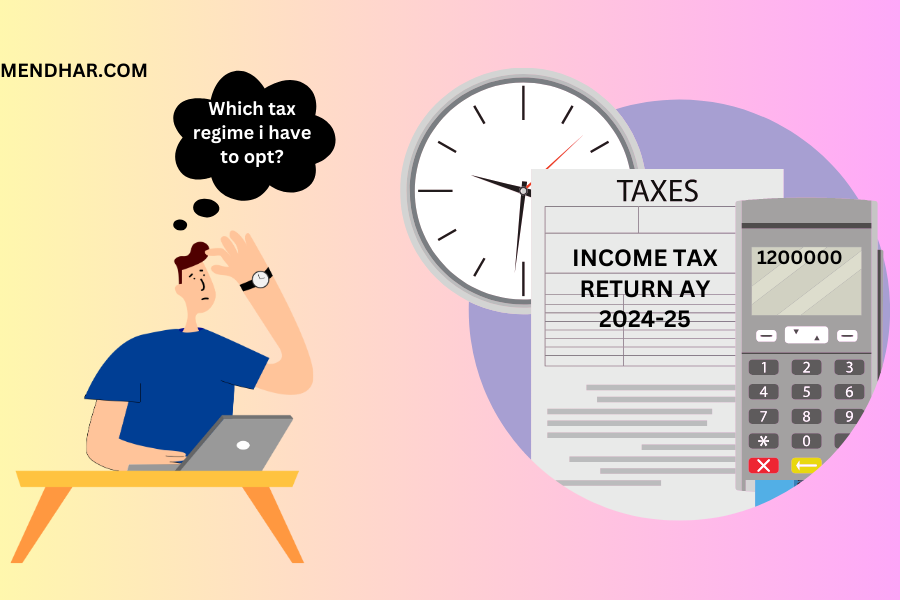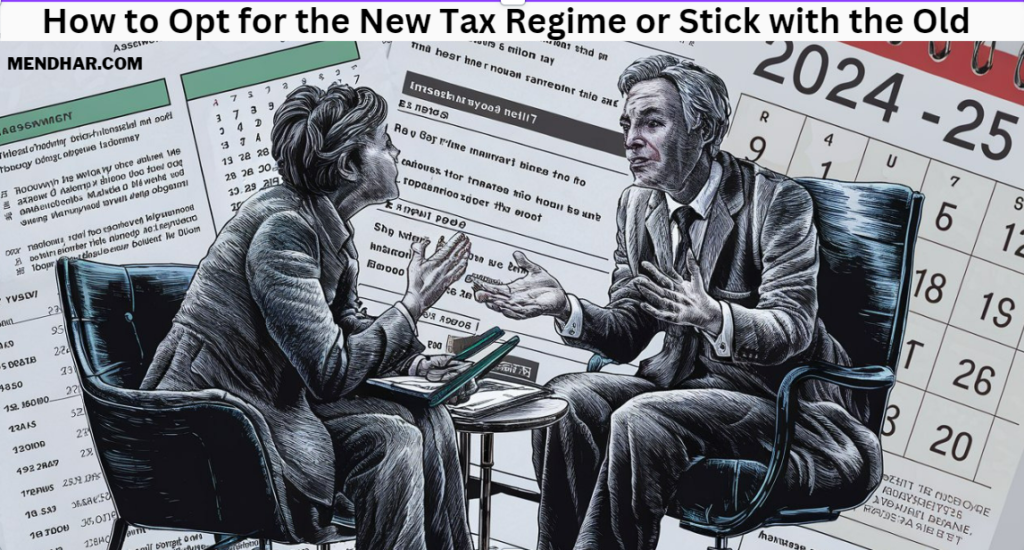Table of Contents
ToggleHow to Opt for the New Tax Regime or Stick with the Old: A Comprehensive Guide

In the dynamic realm of taxation, making the right choice between the new and old tax regimes is paramount. Introduced by the Indian government in 2020, the new tax regime offers lower tax rates but comes at the expense of deductions and exemptions provided by the old regime. This decision can significantly impact your tax liabilities and financial planning. In this guide, we’ll explore how to navigate this critical decision-making process and choose the tax regime that best suits your financial needs.
Understanding the Old and New Tax Regimes:
Old Tax Regime:
In the old tax regime, taxpayers are familiar with the traditional structure of income tax. This system offers various deductions and exemptions under sections like 80C, 80D, 80E, among others. While the tax rates may be higher, taxpayers can leverage these deductions to reduce their taxable income significantly.
New Tax Regime:
On the other hand, the new tax regime introduced lower tax rates aimed at simplifying the tax filing process. However, to achieve lower tax rates, most deductions and exemptions available under the old regime are either reduced or eliminated. This streamlined approach makes tax filing more straightforward but may result in higher tax liabilities for certain individuals.
Factors to Consider When Opting for a Tax Regime:
1. Income Profile:
Your income profile plays a crucial role in determining which tax regime is more beneficial for you. Evaluate your income level and understand how it aligns with the tax slabs and deductions available in both regimes. Higher-income individuals might find more tax-saving opportunities in the old regime, while lower-income earners could benefit from the lower tax rates offered by the new regime.
2. Deductions and Exemptions:
Examine the deductions and exemptions you typically claim under the old regime and compare them with the savings from the lower tax rates in the new regime. If you heavily rely on deductions for investments, insurance premiums, or other expenses, sticking with the old regime might result in more significant tax savings.
3. Long-Term Financial Goals:
Consider your long-term financial goals and how each tax regime aligns with them. If you’re focused on maximizing savings for retirement, education, or other significant expenses, the deductions available in the old regime might be more advantageous. However, if simplicity and lower tax rates are your primary concerns, the new regime could be a better fit.
4. Future Tax Planning:
Evaluate how your financial situation is likely to change in the future and how each tax regime accommodates these changes. If you anticipate significant changes in your income or expenses, choose the tax regime that provides the most flexibility and tax-saving opportunities in the long run.

Due Dates for FY 2024-25:
It’s crucial to be aware of the due dates for filing income tax returns for the financial year 2024-25. As per current regulations, the due date for individuals is typically July 31st of the assessment year. However, it’s essential to stay updated with any changes or extensions announced by the tax authorities.
| Type of Taxpayer | ITR Form | Audit Requirement | Due Date for FY 2024-25 |
|---|---|---|---|
| Salaried and Others (Non-audit) | ITR-1 (SAHAJ) | No | July 31, 2025 |
| Salaried and Others (Non-audit) | ITR-2 | No | July 31, 2025 |
| Salaried and Others (Audit) | ITR-3 | Yes | September 30, 2025 |
| Corporate | Varies | Yes | End of following month after audit completion |
Filing Income Tax Returns:
| Step | Action |
|---|---|
| 1 | Gather Documents: Collect all necessary documents such as Form 16 (for salaried individuals), investment proofs, bank statements, and any other relevant paperwork. |
| 2 | Choose Tax Regime: Decide whether you will opt for the old tax regime or the new tax regime as per your preference and financial situation. |
| 3 | Select Appropriate ITR Form: Choose the correct Income Tax Return (ITR) form based on your income sources and other relevant factors. For example: |
| – Salaried individuals may use ITR-1 (SAHAJ) or ITR-2, depending on their sources of income. | |
| – Individuals with business income or capital gains may need to use ITR-3. | |
| – Corporates will use the applicable form based on their structure and income sources. | |
| 4 | Prepare Tax Return: Use reliable tax filing software or seek assistance from a tax professional to accurately prepare your tax return. Ensure that all income, deductions, and other relevant details are correctly entered. |
| 5 | Review and Verify: Double-check all the information entered in the tax return for accuracy and completeness. Verify that all deductions and exemptions are correctly claimed. |
| 6 | File Tax Return: File your income tax return online through the official income tax e-filing portal or using authorized intermediaries. Ensure that the filing is done within the due date mentioned by the tax authorities. |
| 7 | Pay Taxes (if applicable): If you have any tax liability after considering TDS and advance tax payments, ensure timely payment of taxes to avoid interest and penalties. |
| 8 | Keep Records: Maintain copies of filed tax returns, acknowledgment receipts, and other relevant documents for future reference and audit purposes. Example: Suppose Faiz, a salaried individual, decides to file his income tax return for the financial year 2024-25. He gathers all his documents, including Form 16 provided by his employer, investment proofs for claiming deductions under various sections, and bank statements showing interest income. Faiz chooses to opt for the new tax regime and selects ITR-1 (SAHAJ) as he doesn’t have any income other than salary and interest. Using a reliable tax filing software, Faiz accurately prepares his tax return, claiming deductions for his investments in ELSS mutual funds and contributions to the Public Provident Fund (PPF). After reviewing the details, Faiz files his tax return online through the income tax e-filing portal before the due date of July 31, 2025. He ensures timely payment of any tax liability arising after considering TDS and advance tax payments. Finally, Faiz keeps copies of his filed tax return and acknowledgment receipt for future reference. |

Conclusion:
Choosing between the old and new tax regimes requires careful consideration of various factors, including income level, deductions, long-term financial goals, and future tax planning. By weighing these factors and understanding the implications of each regime, taxpayers can make an informed decision that optimizes their tax savings and financial well-being. Remember, it’s essential to review your tax strategy periodically and adapt to changes in tax laws and regulations to ensure compliance and maximize savings.
Frequently Asked Questions about Choosing Between the Old and New Tax Regimes
When is the deadline for filing income tax returns for the financial year 2024-25?
- The deadline for filing income tax returns for individuals (non-audit cases) is typically July 31, 2025. For individuals subject to audit requirements, the deadline is usually September 30, 2025.
Which Income Tax Return (ITR) form should I use?
- The choice of ITR form depends on your sources of income and other factors. Salaried individuals may typically use ITR-1 (SAHAJ) or ITR-2, while individuals with business income or capital gains may need to use ITR-3. Corporates will use the applicable form based on their structure and income sources.
What documents do I need to file my income tax return?
- You’ll need documents such as Form 16 (for salaried individuals), investment proofs, bank statements, details of income from other sources, and any other relevant paperwork supporting your income, deductions, and exemptions claimed.
What if I miss the deadline for filing my income tax return?
- Missing the deadline may attract penalties and interest on the outstanding tax liability. It’s crucial to file your tax return within the due date to avoid such consequences.
Can I revise my income tax return after filing?
- Yes, you can revise your income tax return within a specified period if you discover any errors or omissions in the original filing. However, there are limitations on the number of times you can revise your return and the timeframe within which revisions are allowed.
How can I pay my taxes if I have a tax liability?
- You can pay your taxes online through the income tax e-filing portal using internet banking, debit card, or other electronic payment methods. Alternatively, you can visit designated bank branches to make the payment offline.
Do I need to keep copies of my filed tax returns?
- Yes, it’s essential to maintain copies of your filed tax returns, acknowledgment receipts, and other relevant documents for future reference and audit purposes. These documents may be required for verification or in case of any inquiries from the tax authorities.


